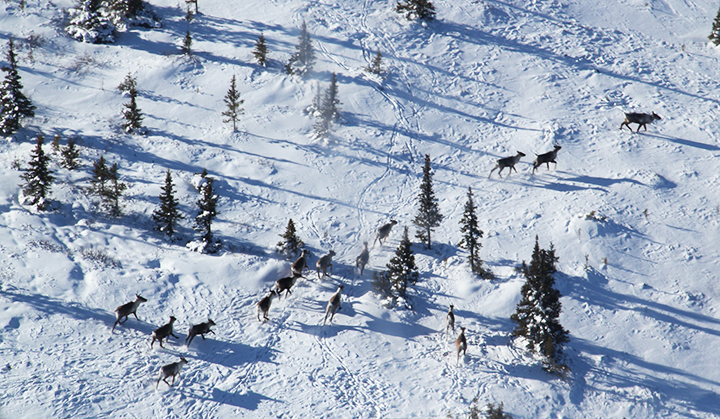Y2Y and partners celebrate positive news for upholding Treaty Rights, stewardship of water, lands and resources
Today’s announcement from the Blueberry River First Nations and the Government of British Columbia (B.C.) on the signing of an implementation agreement is positive and welcome news for upholding Treaty Rights and the collaborative stewardship of water, lands and resources in Treaty 8 Territory in northeastern B.C.
“Blueberry River First Nations members have stewarded their traditional territories since time immemorial, protecting both nature and way of life in the face of cumulative industrial disturbance,” says Tim Burkhart, B.C. program manager with Yellowstone to Yukon (Y2Y) Conservation Initiative. “Y2Y celebrates the leadership of Blueberry River First Nations and the Province for reaching this agreement.”
In June 2021, a B.C. Supreme Court decision found the B.C. government had infringed upon Blueberry River’s Treaty 8 rights — specifically, by allowing the territory, wildlife and their habitats to be drastically impacted by decades of unsustainable forestry, oil and gas, agriculture, mining and hydroelectric development, including Site C Dam.
The agreement signed today — including 650,000 hectares protected from further industrial disturbances; a $200 million Restoration Fund; a new ecosystem-based management approach for co-developed land-use planning, and wildlife co-management efforts — is an important step in rectifying this ongoing Treaty infringement.
It intends that Blueberry River First Nations, Treaty 8 First Nations and the Province have a new partnership to change how they steward water, land and resources and address cumulative effects. This would be achieved through restoring the land, protecting new areas from industrial development, and constraining certain development activities while a long-term cumulative effects management regime is implemented.
“The signing of this agreement invests back into Indigenous governments and communities to protect ecosystems and biodiversity, contributes to B.C.’s 30 by 30 conservation goals, and takes an important step to uphold the promises made in Treaty 8,” says Burkhart.
This aligns with the Truth and Reconciliation Agreement’s call to action to “renew or establish Treaty relationships based on principles of mutual recognition, mutual respect, and shared responsibility for maintaining those relationships into the future.”
“We recognize that the Province has a lot of work to do to restore good faith,” adds Burkhart. “We call on the Province to fully implement this and other agreements with Treaty 8 First Nations, to honour the Treaty, and to protect ecosystems and biodiversity for future generations.”
A 2016 Atlas of Cumulative Impacts found that 73 per cent of the Blueberry River First Nations’ traditional territory was within 250 metres of an industrial disturbance, with more than 110,000 linear kilometres of roads, pipelines and transmission and seismic lines cut across less than 40,000 square kilometres of land.
Y2Y has consistently highlighted the significant adverse cumulative impacts on wildlife and habitat in the Peace region, and presented solutions to the Province, including support for Indigenous-led conservation initiatives.
Additional information:
- Jan. 20, 2023 announcement: ‘B.C., Treaty 8 First Nations build path forward together‘
- Visit the Blueberry River First Nations website
- Yahey v. British Columbia decision (2021)
- Blueberry River First Nations “Where Happiness Dwells” campaign


